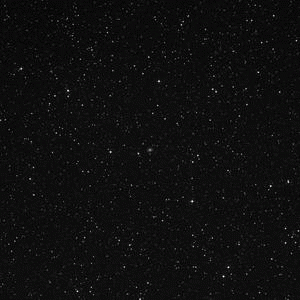IC 4998

Overlaid DSS image of IC 4998, 60' x 60' with north at top and west to the right
Aladin viewer for the region around IC 4998
| Type | Unknown |
|---|---|
| Magnitude | Right Ascension | 20h 22' 10.6" (2000) |
| Declination | 38° 18' 30" S |
| Constellation | Sagittarius |
Observing Notes
Harold Corwin
IC 4998 is perhaps a duplicate observation of IC 5018. The listed observation dates and descriptions are identical, and the declinations are just an arcminute different. Finally, there is only a single galaxy in the area that Swift could have seen.
But -- and it's a big BUT, too -- there is nothing in either of Swift's positions, the differences with the galaxy are not even digits (but many of Swift's errors are not), and both RA and Dec are off for both observations. Furthermore, he claims to have found the objects on the same night, 11 September 1897 (see IC 4946 for more confusing observations on this night). Finally, his description of the surrounding star field does not fit the galaxy very well.
That description for both objects reads "eF, pS, R, bet 2 8 1/2 mag sts nf and sp." There is a star southwest of the galaxy, but it is 13.3 arcmin away and its magnitude is 9.6. So, it would have been close to the edge of Swift's 33 arcmin field (if the galaxy was centered), and though it is the brightest star in the field, it is not as bright as Swift estimated.
However, there is no star to the northeast. There is one of magnitude 9.8 almost directly north -- and a little west -- 13.8 arcmin away. The brightest star to the east is 7.9 arcmin almost directly east -- and a little south -- and magnitude 10.1.
All in all, I'm skeptical about this being Swift's galaxy -- if he is indeed giving us observations of only one object. Perhaps there are larger errors here -- one degree, or ten degrees, or one hour. All of these possibilities remain to be investigated.
In March 2017, Gary Kronk wrote with a another suggested identification. Here
is what he had to sayI set one of my planetarium programs to only show deep sky objects and all stars of magnitude 9 and brighter. I then expanded the field centered on [L12-N17] to 15° by 8.5° and began looking for objects that were between two 8 1/2m stars north following and south preceding. I found a few objects with bright stars in the appropriate locations, but most had problems. Some cases had one of the stars much brighter than the other, while other cases had more than one galaxy in the field of almost equal magnitude. After I had eliminated all of the unlikely candidates, I had one galaxy left, PGC 64706...Aside from the 1.4 deg error in the declination, this galaxy is an appropriate choice. It's RA is about halfway between Swift's two estimates -- assuming, of course, that he found the same galaxy in both his observations -- and it is of an appropriate magnitude for Swift's optics. I've still listed it with colons, but this is now our prime candidate for Swift's object.
This object has an 8.0-magnitude star north-following and an 8.6-magnitude star south-preceding that would both have been in the field of view with the galaxy. The object's magnitude is 14.6 and the dimensions are 46" x 20". I thought it interesting that the right ascension is between Swift's two measurements. Perhaps the biggest problem is its location 1° 23[min] south of Swift's two averaged declinations.
Other Data Sources for IC 4998
Nearby objects for IC 4998
1 object found within 120'
| IC 5018 |
Credits...
Drawings, descriptions, and CCD photos are copyright Andrew Cooper unless otherwise noted, no usage without permission.
A complete list of credits and sources can be found on the about page
IC 4998